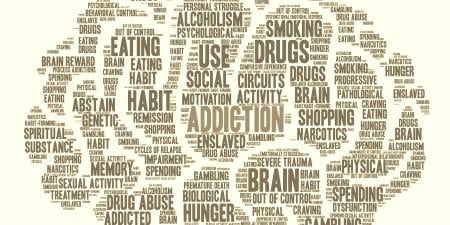Substance use disorders (SUDs) are a major public health and medical problem. Overall, substance abuse accounts for 1 in 4 deaths in the United States each year, and results in more lives lost, illnesses, disabilities, and family and workplace disruptions than any other preventable condition [1]. This takes a huge toll on the health and safety of individuals and communities and places enormous, often unrecognized, burdens on health care.
Despite this striking impact upon society, substance abuse education for U.S. medical students and residents is insufficiently effective in addressing the medical, psychological, social, and economic complications of this crisis. As the report from the White House Leadership Conference on Medical Education in Substance abuse notes, "[d]edicated training in SUDs is rarely offered" [2]. While 119 of the 125 U.S. accredited medical schools that responded to the 1998-1999 LCME (Liaison Committee for Medical Education) survey reported that they provided substance abuse education as part of a larger required course, only 12 had a separate required course, and only 45 schools offered a separate elective course [3]. Clearly, medical students need more mandatory exposure to this important topic, as well as more opportunity for voluntary learning.
As the LCME report confirms, lectures and other curricular activities about substance abuse are typically "add-ons" to a standing medical school course, such as a second-year psychiatry sequence, or a single grand rounds lecture in internal medicine that may represent the particular interests of the faculty member who happens to be teaching. For all practical purposes, the frequency and depth in which substance abuse is discussed is linked to the interests of the faculty Even when there are faculty "champions," the topic is often dealt with unevenly and sporadically due to fierce competition within the medical school curriculum. Without a prominent faculty advocate, inclusion in the curriculum is marginal at best.
The inconsistent and limited education received by medical students contributes to inadequate assistance for patients in need, despite a growing number of effective medications and intervention strategies and low costs for their use. A study of 1,419 patients from health maintenance organization primary care clinics found a prevalence of 7.5 percent for hazardous drinking and 3.2 percent for nonmedical drug use. The 10 percent of patients with one of the two problems is similar to the rates for hypertension and diabetes [4]. It is well documented that patients with SUD have higher rates of comorbidity and utilization of health care services [5, 6]. Yet, the 1998 national Healthcare for Communities survey [7] found that only 13 percent of patients reported being screened and counseled for nondependent problem drinking, and only 48 percent of problem drinkers reported receiving any follow-up (most being told to "stop drinking").
The Role of Physicians
Research indicates that physicians can play a positive role in influencing patients' health decisions about substance abuse. Screening and brief intervention can help change the course of an individual's harmful drinking when offered by primary care physicians [8] and has also been shown to be effective in trauma settings [9, 10].
Many professional medical societies including the American Psychiatric Association, American Academy of Pediatrics, and the American College of Obstetrics and Gynecology have adopted policies that call upon physicians to be knowledgeable, trained, and involved in prevention, screening, and intervention for SUDs. American Medical Association (AMA) policy encourages all physicians, particularly those in primary care, to be educated in all phases of intervention with this patient population. The AMA has also encouraged in-depth qualitative studies to better prepare physicians to care for patients with SUDs and to identify, disseminate, and implement certification and accreditation activities and successful educational programs [11]. Further, a National Academy of Science report recommended, "all treatment professionals should have some knowledge of basic neuroscience and how alcohol, nicotine, and other drugs work on the brain pathways, influence behavior, and interact with diverse conditions" [12].
Reimbursement has been a commonly identified barrier to physicians' ability to address SUD concerns with their patients. Recently, this obstacle was partially overcome by the approval of two new diagnostic treatment codes for screening and brief intervention, specifically, two new Level 1 CPT (current procedural terminology) codes, 99408 and 99409. Effective January 2008, these codes will streamline reporting and reimbursement for doctors who perform screening and brief intervention for alcohol or substance abuse (other than tobacco). The Centers for Medicare and Medicaid Services also announced two new HCPCS (healthcare common procedures coding systems) procedure codes for Medicaid services, effective January 2008: H0049 Alcohol/Drug Screening—alcohol and drug screening, and H0050 Alcohol/Drug Service 15 min—alcohol and drug service, brief intervention (15 minutes). These new codes heighten the need for appropriate physician training.
What Do Physicians Need to Know and Be Able to Do?
The Institute of Medicine's Committee on Behavioral & Social Sciences in Medical School Curricula examined medical education, training, and strategies related to a broad range of behavioral and social health issues, including SUDs [13]. The committee recommended identifying critical knowledge domains as an effective way to organize such education.
In general, the critical competencies needed to address SUDs rely on thorough understanding of basic biomedical sciences (e.g., molecular biology and pharmacology) and clinical sciences (e.g., patient interviewing, physical assessment, and psychosocial counseling techniques) [14, 15].
These competencies should include, at a minimum, knowledge and skills in:
- Prevention, screening, and brief intervention. Physicians should know how to screen for substance use disorders (i.e., classic signs and symptoms) and when and how to perform counseling, brief intervention, and referral, using tested and validated instruments when available.
- Recognizing co-occurring medical and psychiatric disorders. All physicians should understand the medical and psychiatric comorbidities and complications of SUDs (including use of multiple drugs). This central assessment may entail referral to a specialized treatment resource that matches the clinical needs of the patient. Follow-up by the referring physician is vital to ascertain whether assistance was obtained. Physicians should be prepared to meet the ongoing medical needs of this patient population.
- Appropriate prescribing of drugs with abuse potential. Physicians need to know, monitor, and assess the prescription of medications with abuse potential to help minimize the risk of inducing or perpetuating prescription drug misuse or abuse. This topic is typically neglected or minimized when SUDs are discussed.
In addition to ensuring competency in these skills, physician education can and should be tailored to specific practice situations, settings, and patient populations.
Barriers to Improving Medical Education
At its 2007 annual meeting, the American Association of Medical Colleges held a substance abuse education session in the very last time slot on the last day of the meeting. The three presenters spoke to an audience of two, one of whom was a co-author of this paper; the other was a substance abuse professional. One would be hard pressed to identify any other condition or disease that impacts such an array of medical problems, interpersonal difficulties, and socioeconomic consequences as SUDs and is relegated to an after-thought among medical educators. Why does this occur?
- By all accounts, positive attitudes toward patients with SUDs deteriorate over the course of medical school education and residency training [16, 17]. The apparent reason for this is physicians' perceived ineffectiveness in their ability to treat ("cure") substance abuse. Their success in managing other diseases stands in sharp contrast to their feelings of inadequacy when treating SUD patients. The disappointment in being unable to "correct or fix" substance abuse behavior results in frustration on the part of the physician who may also blame the patient for not wanting to change or recover.
Even when residents are trained in how to conduct brief interventions, the training has marginal impact on their acquisition of the requisite attitudes and skills [17]. This failure may also reflect on the teaching abilities and biases of those providing the training and on student exposure that is too limited to allow them to observe success.
Treatment and management of SUDs is comparable in characteristics and effectiveness to management of other chronic diseases, and expectations of cure and immediate change must be replaced with more realistic, long-term chronic care or disease management plans and revised definitions and expectations regarding success. That is, recovery, in the traditional sense, does occur but may require long-term strategies; unsuccessful efforts to quit smoking are indicators of progress, not failure. Physician attitudes about SUD patients clearly have a negative impact on how these patients are cared for. Other chronic diseases create great ongoing costs and use of resources, lead to physician frustrations, pose treatment difficulties, and involve relapses in patient conditions and behaviors. Yet it is unlikely that a patient with diabetes, high blood pressure, or other chronic conditions would not be cared for, not receive repeated and long-term services, or be accused of not wanting to get better when relapse occurs. Nor would such conditions go unidentified as often as SUDs. The lack of screening and early interventions only make medical complications more likely and treatment more difficult.
- Patients with SUDs are a heterogeneous patient population. Some suffer from a disease (alcoholism) while others are not dependent but engage in risky use (e.g., binge drinking). Physicians looking only for dependence are likely to miss numerous other use-related problems. This diversity of substance abuse patterns, consequences, and health challenges requires individualized strategies in addition to the standardized approaches that are appropriate to the clinical scenario. Unfortunately education about SUDs tends to minimize this complexity in favor of a set of standardized approaches. It is imperative that treatment plans be tailored to the patients' clinical situations, but learning to do so takes time and requires clinical skills that may be neglected so that other competencies—deemed more important—are taught. Again, if SUD treatment were viewed as another instance of disease management or chronic care, numerous skills and individualized treatment would not seem unusual.
- The high health-risk behaviors often associated with SUDs require interventional components—e.g., behavioral and motivational counseling, risk assessment, referral to community based services—that are not employed in managing the health conditions that many physicians feel most comfortable or skilled in treating. While physicians are accustomed to treating illness by prescribing medications, less severe SUDs may not require these. Research suggests that support for and training in behavioral change techniques such as communication and motivational skills continue to be areas in which medical education needs to improve. In conjunction with physician education, practice systems should be established so that someone, if not the physician, sees to these patient needs [19].
- The personal health beliefs and practices of physicians may affect their care of patients with SUDs. A national survey of physicians found that those who had directly encountered problems with alcohol or other drugs (through friends or family members) were more likely to screen, diagnose, and conduct brief interventions for SUDs than physicians who had not had such direct experiences [20]. Moreover, culturally shared values, attitudes, and beliefs shape physicians' understanding and treatment of SUDs. Physicians, like everyone else, have value judgments about responsibility and self-control that serve as a backdrop to their education and their practice. While individual choice is a component of initial drug use and an element in achieving abstinence, current understanding of the genetic, environmental, familial, and biochemical factors that lead to SUDs and their consequences creates a need to alter physician attitudes, knowledge, and perceptions regarding these disorders.
- Physicians may lack an understanding of the health care cost savings associated with treating patients with SUDs. Two randomized control trials demonstrated that each dollar spent in intervention realized a future health care cost savings of $4.30 [21] and a $3.80 reduction in medical costs [22]. The Partnership for Prevention found that the annual medical cost of service for problem drinking screening and brief counseling was only $8.00 per year.
One Approach to Better Physician Education
The American Medical Association and the National Institute on Drug Abuse (NIDA), each recognizing the need to better educate and reach out to primary care physicians about substance abuse research and clinical practice and have partnered in a Primary Care Physician Outreach Project managed by JBS International. The research conducted for this project has confirmed what others had been saying—there is a need to improve physician knowledge and skills related to SUDs, beginning in medical school and continuing through graduate and ongoing medical education. To assist in achieving this goal, NIDA recently funded eight medical schools that comprise four Centers of Excellence (CoE) for Physician Information to serve as national models for the advancement of addiction awareness, prevention, and treatment in primary care practices.
The NIDA CoEs are identifying gaps in knowledge about drug addiction, developing educational materials and resources specifically designed for physicians in training to close those gaps, and determining the most effective means of delivering this information. The ultimate goals are to raise primary care physicians' awareness of drug addiction as a health problem and to facilitate dissemination of knowledge to best prevent and diagnose abuse of prescription and illicit drugs and treat patients who are struggling with it. In their first year of operation, the CoEs:
- Conducted a formative assessment of medical students and resident physicians to identify how and where they obtain information about medical drug abuse and to identify misperceptions and knowledge gaps.
- Conducted a curriculum assessment of medical programs that examined how SUDs are addressed at each CoE.
- Are developing informational and educational materials and training resources to redress the deficiencies identified by the formative assessment.
- Identified innovative prototypes and delivery systems to impart the necessary knowledge and skills to medical students and resident physicians.
The CoEs also plan to support the development of a cadre of core faculty who exhibit positive attitudes and excellent clinical skills in the screening and treatment of SUDs. These core faculty members will be recognized leaders in their respective institutions who care about this patient population, have influence in the structure and content of the curriculum, and, most importantly, exhibit and demonstrate the attitudes and skills which they are attempting to impart to their students and colleagues.
A large number of medical schools, medical education programs, public health organizations, and federal agencies have begun to collaborate on how to better prepare and encourage physicians to address SUDs in their patients. In December 2004 the Office of National Drug Control Policy convened a collaborative Leadership Conference on Medical Education in Substance Abuse with a follow-up meeting in 2006 and ongoing workgroups to address particular issues [2]. The Association for Medical Education and Research in Substance Abuse (AMERSA) Project Mainstream is also working with these organizations to implement a long action plan to bring SUDs into the mainstream of medical education and physician practice.
References
- Hanson GR, Li TK. Public health implications of excessive alcohol consumption. JAMA. 2003;289(8):1031-1032.
-
Office of National Drug Abuse Policy. Leadership Conference on Medical Education in Substance Abuse. Washington, DC: Office of National Drug Abuse Policy; 2004:37-45.
-
Liaison Committee on Medical Education. Part 2: Annual Medical School Questionnaire for 1998-1999. Chicago, IL: The Liaison Committee on Medical Education; 1999.
- Mertens JR, Weisner C, Ray GT, Fireman B, Walsh K. Hazardous drinkers and drug users in HMO primary care: prevalence, medical conditions, and costs. Alcohol Clin Exp Res. 2005;29(6):989-998.
- Stinson FS, Grant BF, Dawson DA, Ruan WJ, Juang B, Saha T. Comorbidity between DSM-IV alcohol and specific drug use disorders in the United States: results from the National Epidemiologic Survey on Alcohol and Related Conditions. Drug Alcohol Depend. 2005;80(1):105-116.
- Hasin DS, Hatzenbueler M, Smith S, Grant BF. Co-occurring DSM-IV drug abuse in DSM-IV drug dependence: results from the National Epidemiologic Survey on Alcohol and Related Conditions. Drug Alcohol Depend. 2005;80(1):117-123.
- D'Amico EJ, Paddock SM, Burnam A, Kung FY. Identification of and guidance for problem drinking by general medical providers: results from a national survey. Med Care. 2005;43(3):229-236.
- Kaner EF, Lock CA, McAvoy BR, Heather N, Gilvarry E. A RCT of three training and support strategies to encourage implementation of screening and brief alcohol intervention by general practitioners. Br J Gen Pract. 1999;49(446):699-703.
- Dunn C. Brief motivational interviewing interventions targeting substance abuse in the acute medical care setting. Semin Clin Neuropsychiatry. 2003;8(3):188-196.
- Gentilello LM, Rivara FP, Donovan DM. Alcohol interventions in a trauma center as a means of reducing the risk of injury recurrence. Ann Surg. 1999;230(4):473-483.
-
American Medical Association. Council on Medical Education. Report 11 of the Council of Medical Education. The status of education in substance use disorders in America's medical schools and residency programs. Chicago, IL: American Medical Association; 2007. Accessed December 13, 2007.
-
Committee to Identify Strategies to Raise the Profile of Substance Abuse and Alcoholism Research; Institute of Medicine. Dispelling the Myths about Addiction: Strategies to Increase Understanding and Strengthen Research. Washington, DC: National Academies Press; 1997.
-
Cuff PA, Vanselow N, eds. Improving Medical Education. Enhancing the Behavioral and Social Science Content of Medical School Curricula. Washington, DC: National Academies Press; 2007.
-
Fiellen DA, Butler R, D'Onofrio G, Brown RL, O'Connor PG. The physician's role in caring for patients with substance use disorders: implications for medical education and training. In: Project Mainstream: Strategic Plan for Interdisciplinary Faculty Development: Arming the Nation's Health Professional Workforce for a New Approach To Substance Use Disorders: Part II. Discipline-Specific Recommendations for Faculty Development. Providence, RI: Association for Medical Education and Research in Substance Abuse; 2002.
- Wyatt SA, Vilensky W, Manlandro JJ Jr, Dekker MA 2nd. Medical education in substance abuse: From student to practicing osteopathic physician. J Am Osteopath Assoc. 2005;105(6 Suppl 3):S18-25.
- Lindberg M, Vergara C, Wild-Wesley R, Gruman C. Physicians-in-training attitudes toward caring for and working with patients with alcohol and drug abuse diagnoses. South Med J. 2006;99(1):28-35.
-
Bota RG. What we know about ourselves: changing attitudes about treating patients with substance use disorders. South Med J.2006;99(1): 11.
- Chossis I, Lane C, Gache P, et al. Effect of training on primary care residents' performance in brief alcohol intervention: a randomized controlled trial. J Gen Intern Med. 2007;22(8):1144-1149.
- Hung DY, Rundall TG, Tallia AF, Cohen DJ, Halpin HA, Crabtree BF. Rethinking prevention in primary care: applying the chronic care model to address health risk behaviors. Milbank Q. 2007;85(1):69-91.
-
Center on Addiction and Substance Abuse at Columbia University. Missed Opportunity: National Survey of Primary Care Physicians and Patients on Substance Abuse. New York: National Center on Addiction and Substance Abuse at Columbia University ; 2000. http://www.casacolumbia.org/ViewProduct.aspx?PRODUCTID=%7B411A28BF-F147-4e94-9B43-2F79535AE9EF%7D. Accessed December 12, 2007.
- Fleming MF, Mundt MP, French MT, Manwell LB, Stauffacher EA, Barry KL. Brief physician advice for problem drinkers: long-term efficacy and benefit-cost analysis. Alcohol Clin Exp Res. 2002;26(1):36-43.
- Gentilello LM, Ebel BE, Wickizer TM, Salkever DS, Rivara FP. Alcohol interventions for trauma patients treated in emergency departments and hospitals: a cost benefit analysis. Ann Surg. 2005;241(4):541-550.



